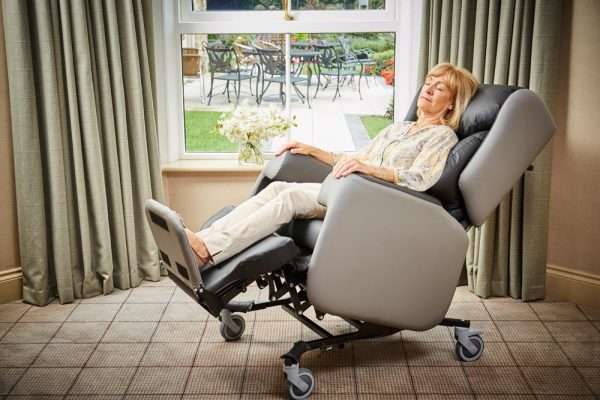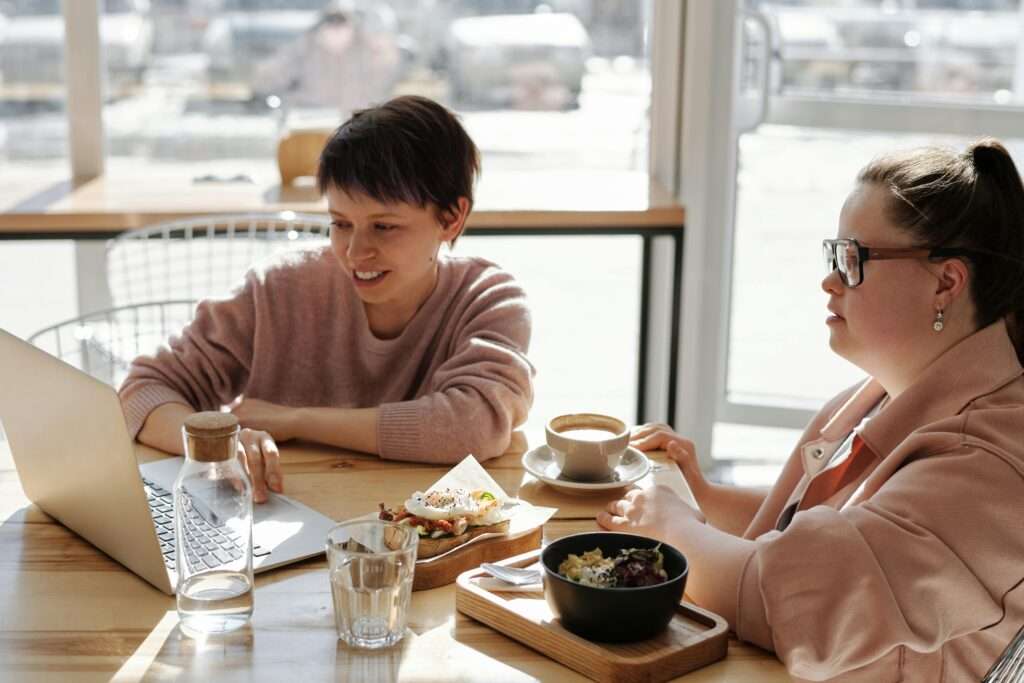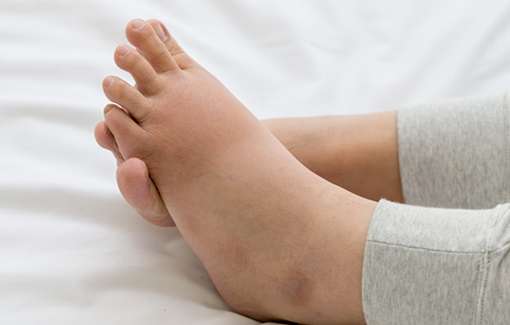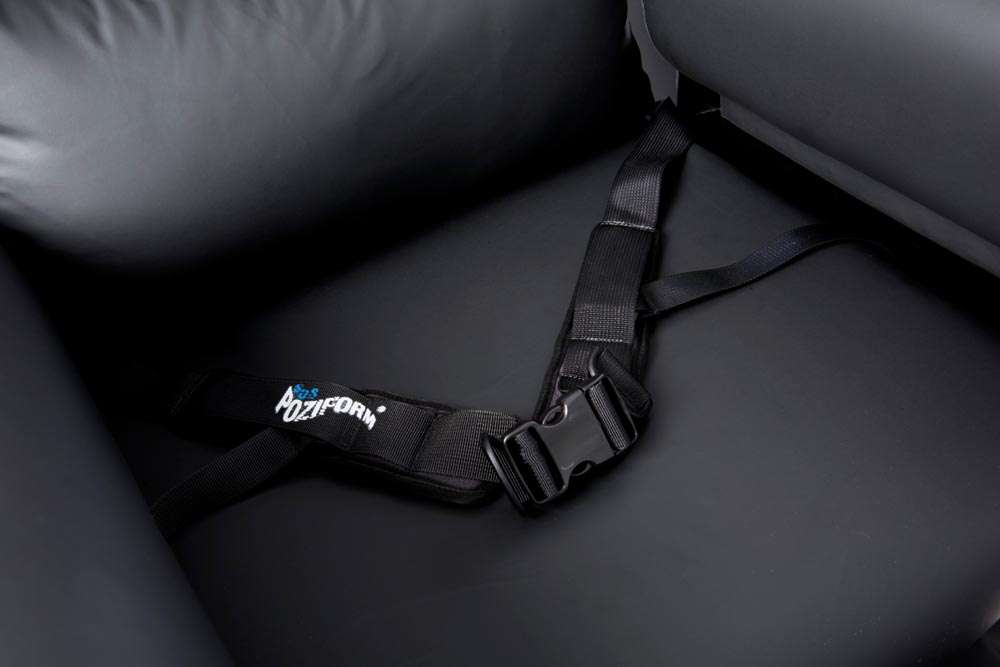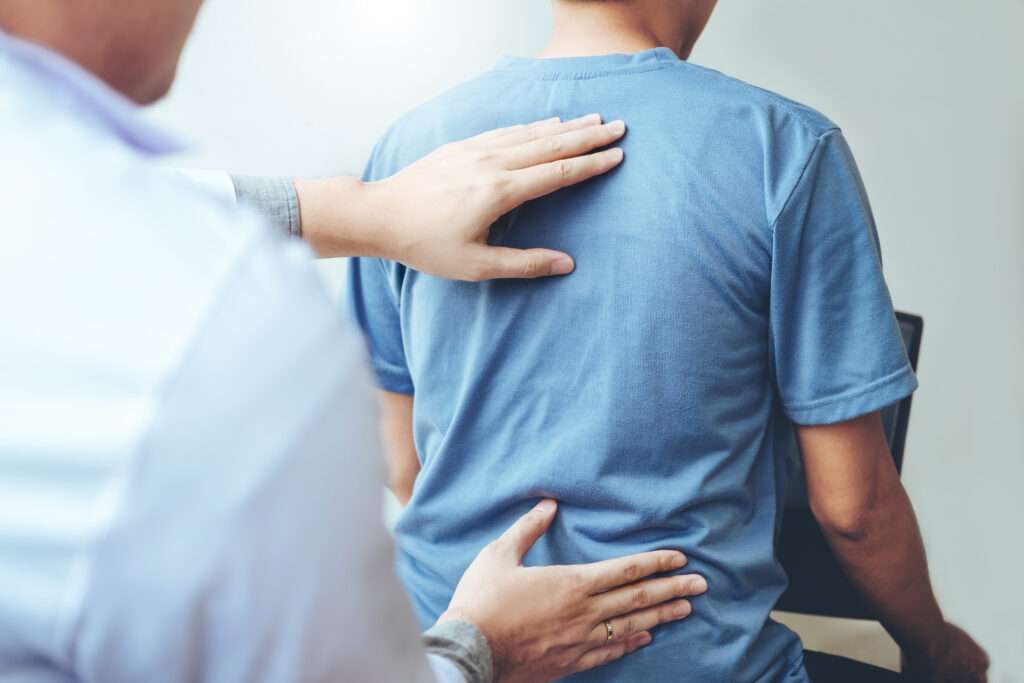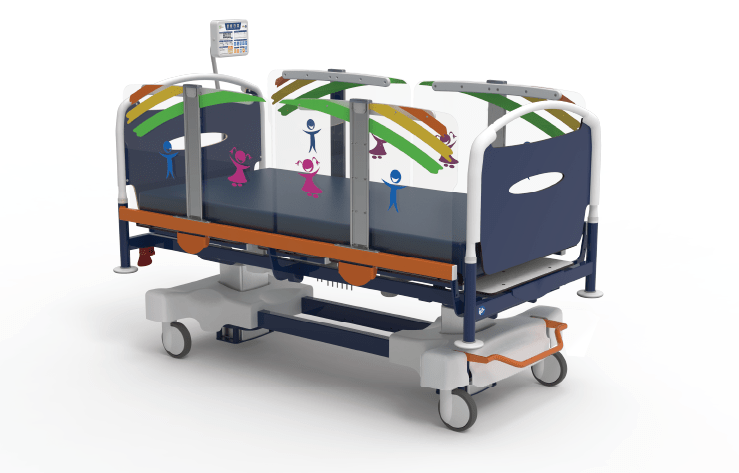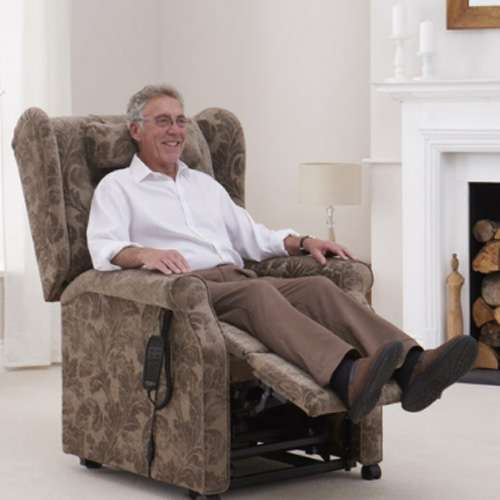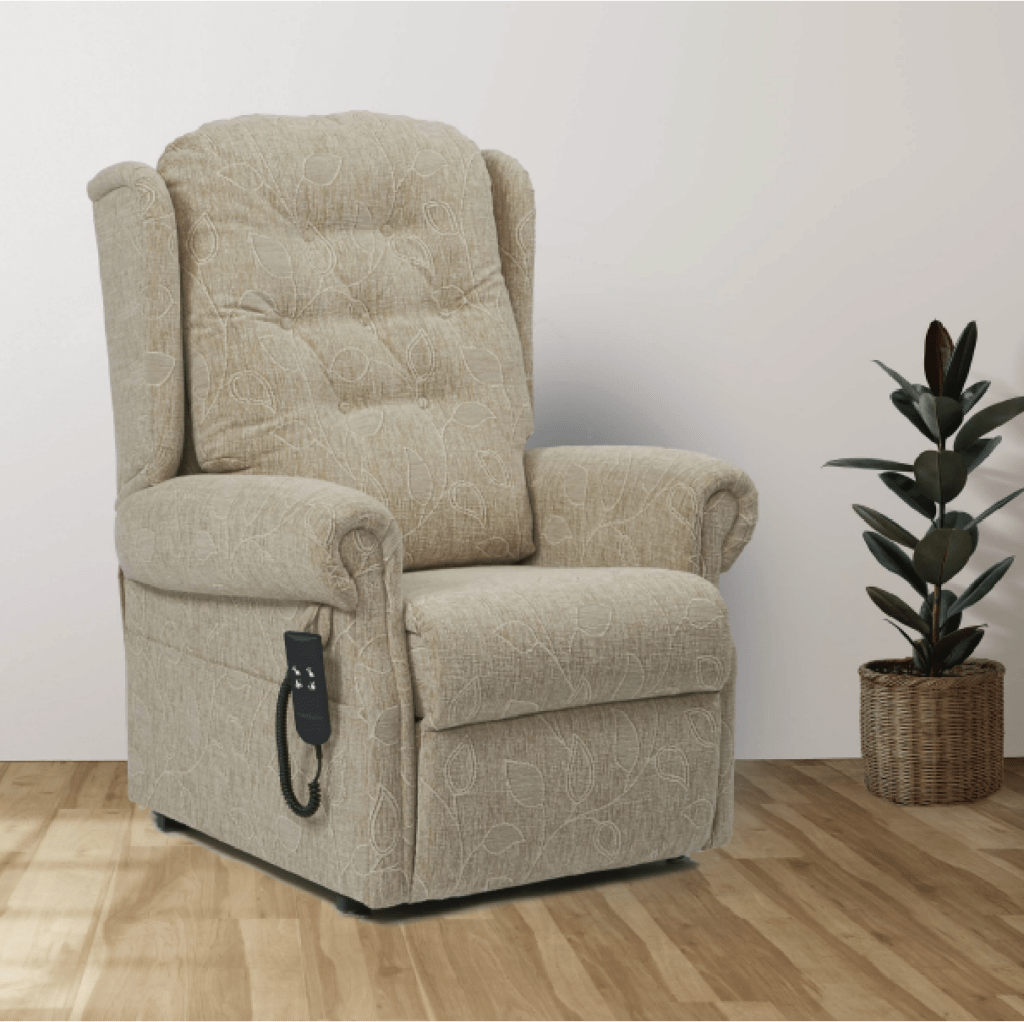Falls from chairs are very problematic. They can have a serious effect on a person’s confidence, not to mention the injuries they can cause.
That’s why it’s so important for OTs and seating specialists to choose chairs that will help to stop anyone from falling or sliding out of them. Here are 5 things to think about when preventing falls from a chair.
Jump straight to…
1. Tilt-in-Space
Tilt-in-space is probably the most convenient way to stop someone from falling out of a chair. This function can be included in a lot of different rise and recline and care chairs, which means that it’s often available to you with no hassle at all.
Because your client is literally tilted back in their chair, it makes it much more difficult for them to slip forward or fall out of the chair. Similarly, some recline positions can give the same piece of mind and keep the person safe.
2. Harnesses and Belts
Harnesses and belts provide another physical barrier that will stop your client from falling from their chair. These can be used to restrain and hold you in place, making it very difficult to slide or fall out of your seat.
As always, we would only recommend using harnesses if it is entirely necessary to do so.
3. Footplates
Footplates also make it more difficult for someone to fall out of their chair. Particularly when teamed up with tilt-in-space, footplates offer a physical barrier that make it very hard for you to fall or slide out of a chair.
Choosing a flip-down footplate can make all the difference in keeping your client safe from falls. It blocks you from losing your footing or slipping down the chair itself.
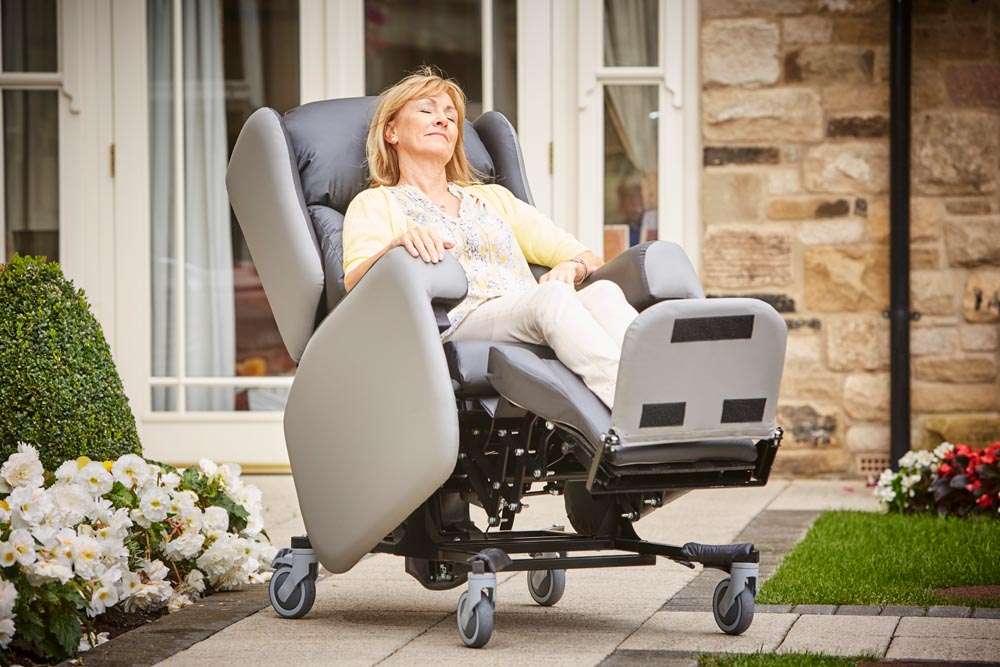
The footplate on the Lento care chair helps to keep you from sliding further down the chair.
4. Raked Seat
A raked seat can also help to keep you safe and in-place to stop any falls from occurring. This will cradle your client in a secure position and make it much more difficult for them to slide or climb out of the chair if they are at risk of falls.
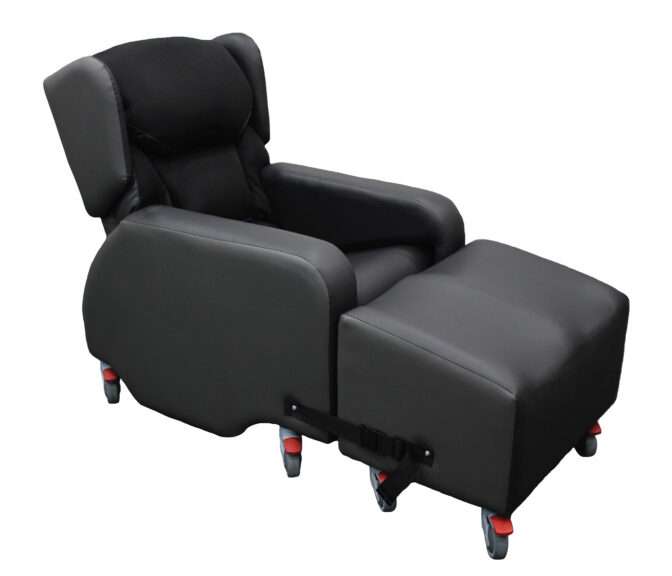
The Lento Neuro is a chair in a raked seating design making it ideal for elderly people at risk of sliding out of their chair.
What is Raked Seating?
Raked patient seating is tilted so the backrest meets the seat at an angle. This means that it is practically impossible to slide forwards and fall out of the chair making it the go to patient care chair for people at risk of falling/sliding out of chairs.
5. Pommel Seat
It’s a less conventional method, and it’s not what the pommel was invented for, but it certainly helps! It can help stop people from falling out of the chair in the event of unforeseen sliding downwards within the chair, as it will save the person from sliding beyond the seat.
However, we must reiterate that a pommel’s primary use is for abduction of the lower limbs.
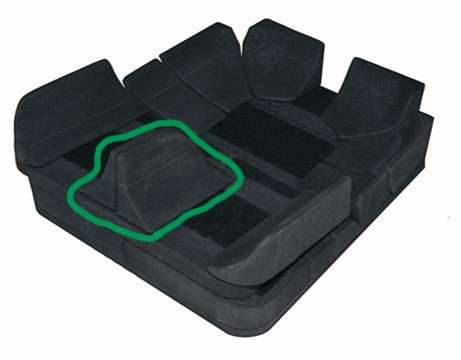
Here you can see the pommel highlighted on a seat cushion.
In Conclusion…
These 5 things can make all the difference if you know someone who is at risk of falls from chairs. Whether it’s something as simple as a raked seat or tilt-in-space, or something more specialist like a harness or belt, there are ways and means of keeping you secure from falls.
If you want some extra advice on a certain client, or you’d like to arrange a free joint seating assessment with one of our seating experts, get in touch with our team.
Helping someone who has fallen from their chair
If you’re supporting a frequent faller, or someone who is at very high risk, it may be necessary to look at ways care equipment can help to help them get back to their feet if they do fall.
Prevention is the best care strategy and finding the right chair greatly reduces the risk of someone falling/sliding, it is worth being prepared in case a fall does happen and a faller needs help getting from the floor.
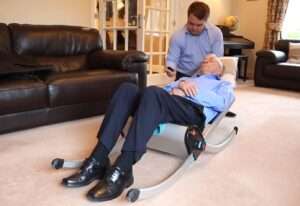
A Raizer Emergency Lifting Chair is a great option for use at home, or in a residential care setting. The lifting device can be quickly and easily built around someone who has fallen.
Available in a remote controlled electric or hand operated manual version, the lifting chair only requires one person to operate the and bring someone safely back to their feet.
Learn more or book a free, no-obligation assessment by calling us on 01423 799960.





